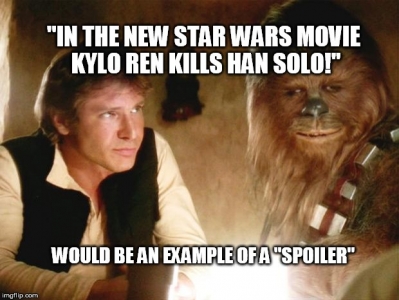Does Snackable Content Engage Your Prospects?
The secret of holding your audience’s attention lies in the noblest of gourds, the watermelon. More specifically, what you do to that watermelon and more precisely how you do it.
But more on that…later.
This year our marketing communications team once again attended the Content Marketing World Conference & Expo in sunny Cleveland. As usual, we were flooded with a deluge of information.
After a marketing conference, there’s always a period of time when I have to wrestle between two opposing impulses. There’s the push from the fire in my belly to evangelize the loftier and aspirational tidbits of wisdom I’ve absorbed to my co-workers. And then there’s the pull from the voice in my head telling me to cut the crap and juice the experience for all the best practices that I can.
I usually end up somewhere in the middle.
Case in point, Andrew Davis’s keynote on the Curiosity Factor, which smacked me over the head with the most powerful, “Duh! Of Course!” moment of the conference. He talked about creating content that grabs and holds an audience’s attention. It was an excellent topic and he’s a superb speaker to boot. Check him out when you have a spare minute.
I can’t do his keynote justice in this post but I’ll try to summarize his main points. And don’t worry, I haven’t forgotten about the watermelons.
Snackable Content Detox
We’ve all heard the term “snackable content,” haven’t we? That’s media that audiences can quickly and easily digest and the conventional wisdom these days is that content needs to be shorter. It needs to be snackable. Yum, yum, yum.
But why do we think our content needs to be snackable?
Because audiences have the attention span of goldfish! Or, so the argument goes. Social media has ravaged the tender part of our brains that allows us to focus on anything for more than a few seconds. Studies have shown it, so it must be true.
And, and, and…no one has time! We’re movers and shakers. We’ve got things to do and people to see. Everyone wants 5 minutes of our time, but we can only spare 3 minutes, and we started the clock 2 minutes ago.
So, short content has quickly become the standard. The snackier the better.
But doesn’t this conclusion seem simplistic? Especially considering how long we spend on Facebook, YouTube and Netflix?
It’s Andrew Davis’s conclusion that the progressive shortening of our content leads to one thing: the removal of everything that makes it interesting. We underestimate our audience’s capability and willingness to stick with us, and we undervalue the message or story we’re trying to communicate. It’s a feedback loop that leads to increasingly less compelling content and evermore disinterested audiences.
Many marketers and content producers today are chasing engagement, which in the current climate means grabbing someone’s attention. But they forget that “attention” is an active noun. It happens over time. You can’t grab it, stuff it in your pocket and run. You have to hold someone’s attention.
A Curiosity Gap is Nothing to Be Afraid Of
The missing element in snackable content and why it can’t hold our attention is its lack of a curiosity gap, the gulf between what your audience knows and what they want to know.
The thinking behind shorter, snackable content is that audiences want us to prune our content until the only thing left is the payoff – the funny, scary, exciting, sad, happy thing. But is payoff what audiences really want?
Let’s try an experiment.
**SPOILER ALERT!**
Aha! Your heart clenched for a second there, didn’t it? For a moment, you might have even closed your eyes for fear of spoilage. For some of you, just seeing those words, even without knowing the context will make you cringe. But why?
Because payoffs aren’t the prize! Audiences think they want to know “The Thing,” the answer to the question, the payoff, but what they really want is tension. They crave it. They just don’t know that they crave it.
But they do understand the concept of tension subconsciously. That’s why they shy away from spoilers. Spoilers don’t spoil the payoff; that remains the same. Spoilers spoil the tension.

If you accept this and decide you want to add tension to your content, building a curiosity gap is the way to do it. Teasing your audience with a promise of a payoff, withholding that payoff, giving them just enough information to keep them on the hook. The longer you do these things the more your audience will desire the eventual payoff. Tension begs for release and the higher the tension the greater the need for release.
The caveat is that the payoff and the tension need to be proportionally about the same in scope. In other words, if your payoff is worthwhile, feel free to ratchet the tension up and make the audience work for it. If your payoff is weak, don’t venture into clickbait territory, lest you betray your audience’s trust.
Andrew Davis provides this formula: Attention = (Tension/Time) x Payoff. Seems scientific enough to me.
In Part 2 of this post, we’ll get to the watermelons, and how it applies directly to your agency new business content and communications.











